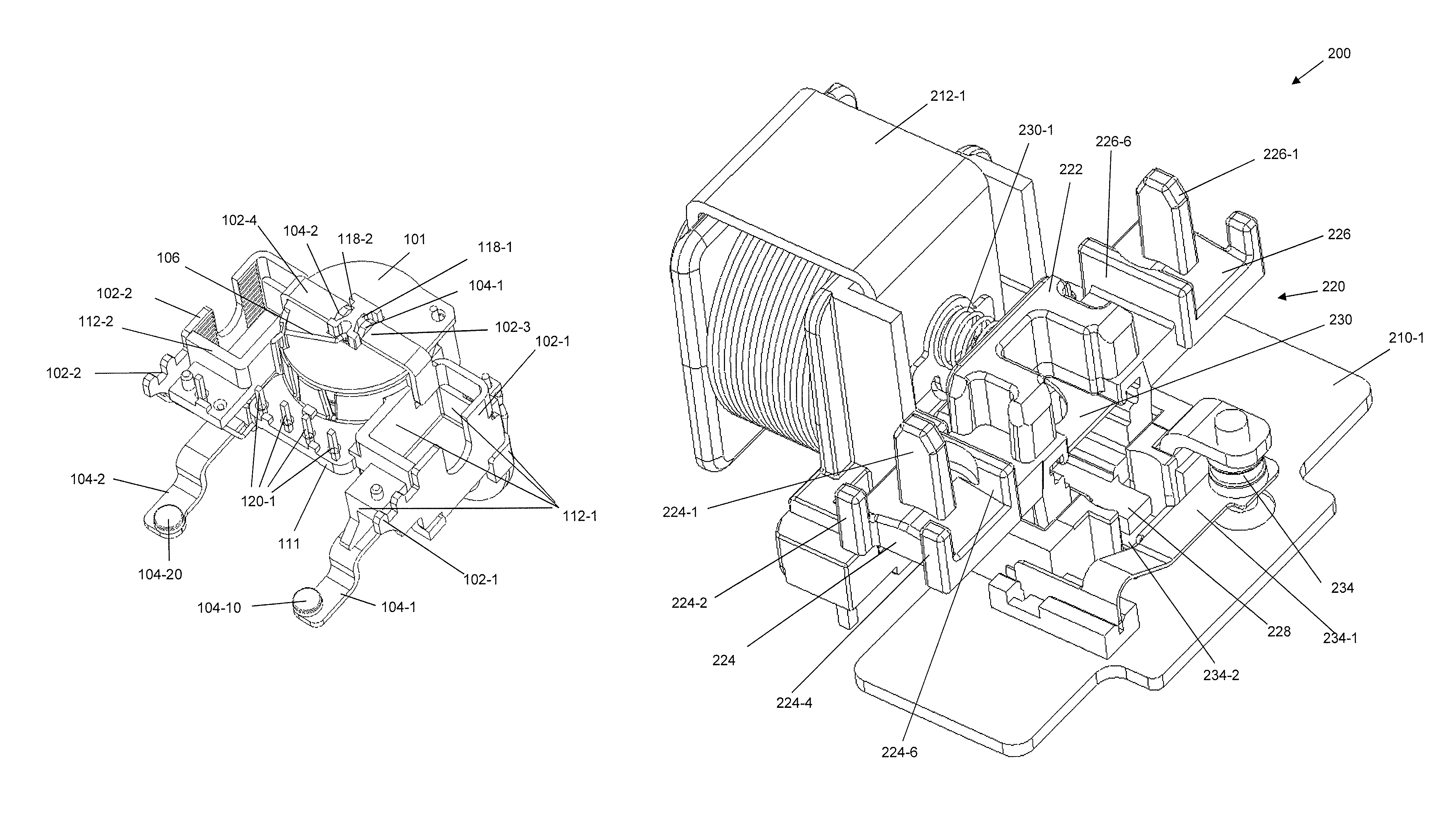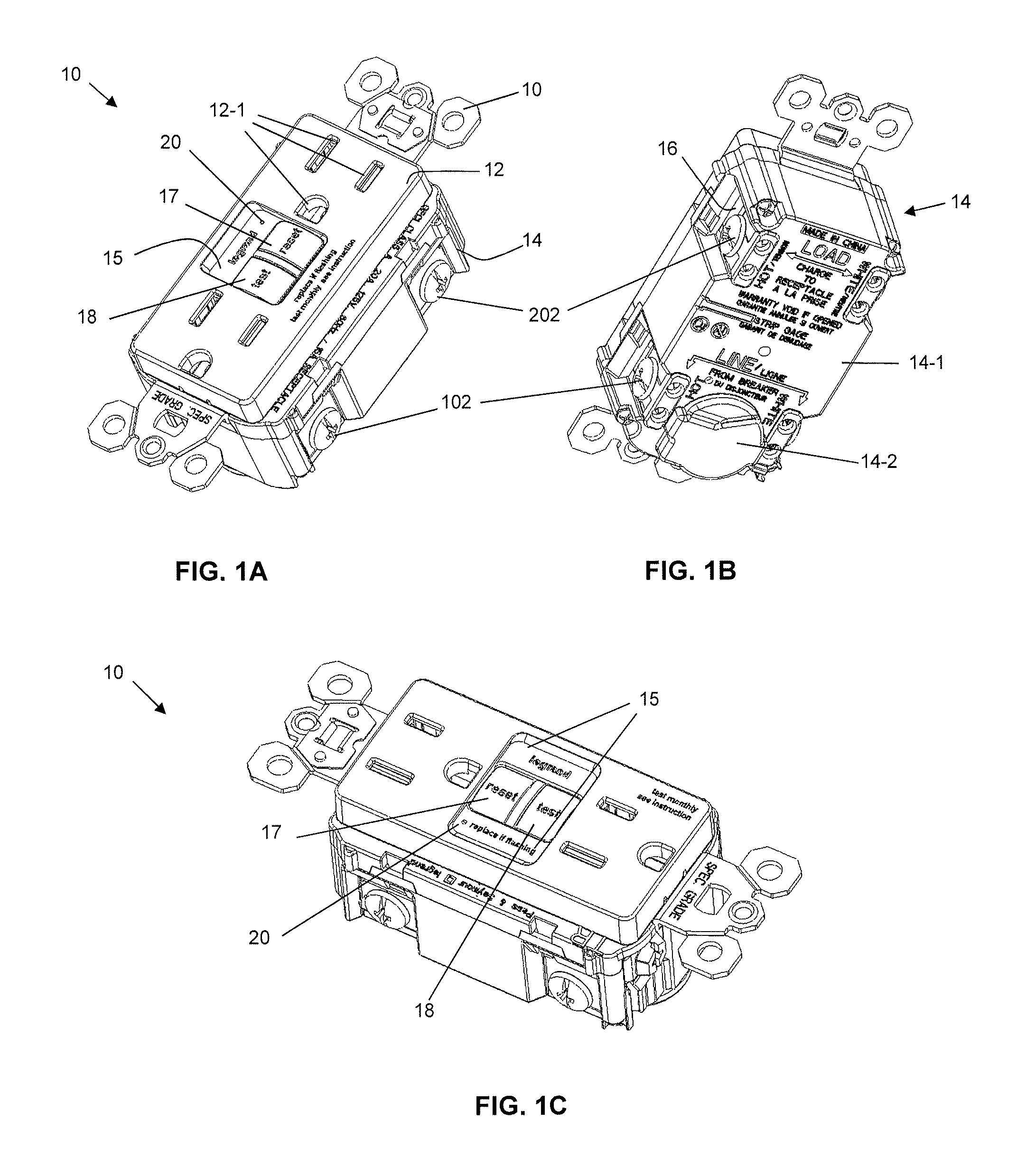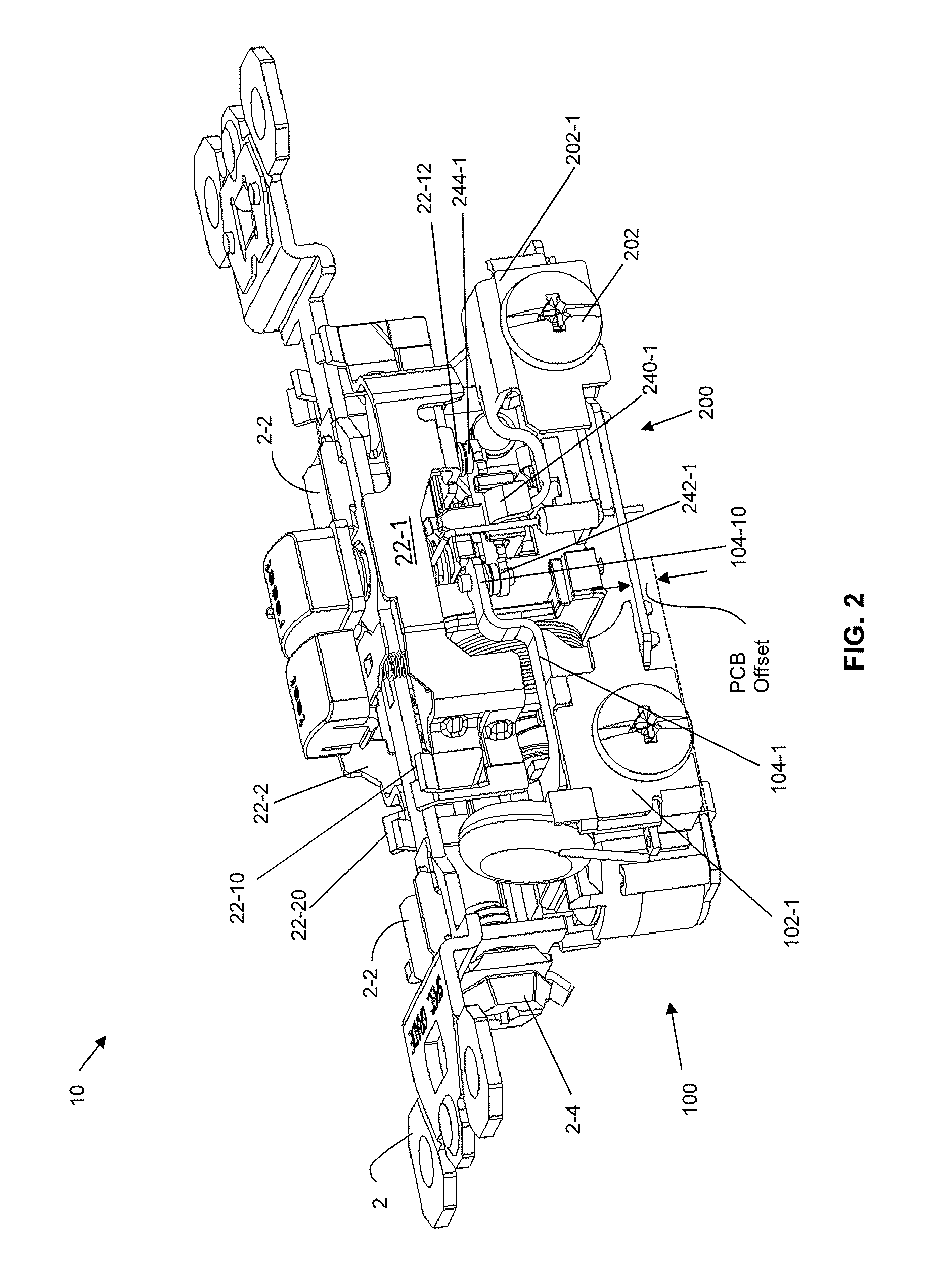Protective wiring device
a protection device and wiring technology, applied in the direction of protective switch details, emergency protective arrangements for limiting excess voltage/current, instruments, etc., can solve the problems of easy damage to microprocessors or gfi detector chips, and easy short circuit failure of low voltage signal circuits. , to achieve the effect of reducing the surface area of the pcb, increasing the density of electronic components, and maintaining device reliability
- Summary
- Abstract
- Description
- Claims
- Application Information
AI Technical Summary
Benefits of technology
Problems solved by technology
Method used
Image
Examples
Embodiment Construction
[0052]Reference will now be made in detail to the present exemplary embodiments of the invention, examples of which are illustrated in the accompanying drawings. Wherever possible, the same reference numbers will be used throughout the drawings to refer to the same or like parts. An exemplary embodiment of the protective device of the present invention is shown in FIGS. 1A-1C, and is designated generally throughout by reference numeral 10.
[0053]As embodied herein, and depicted in FIGS. 1A-1C, perspective views of the protective electrical wiring device in accordance with various embodiments of the present invention are disclosed. The protective device 10 includes a housing having a front cover 12, a back body member 14 and a separator 16. In these embodiments, only a small portion of the separator 16 can be viewed from the exterior of the device 10 (See, FIG. 1B). The front cover includes outlet receptacles 12-1 which are configured to accept the hot, neutral and ground blades of a ...
PUM
 Login to View More
Login to View More Abstract
Description
Claims
Application Information
 Login to View More
Login to View More - R&D
- Intellectual Property
- Life Sciences
- Materials
- Tech Scout
- Unparalleled Data Quality
- Higher Quality Content
- 60% Fewer Hallucinations
Browse by: Latest US Patents, China's latest patents, Technical Efficacy Thesaurus, Application Domain, Technology Topic, Popular Technical Reports.
© 2025 PatSnap. All rights reserved.Legal|Privacy policy|Modern Slavery Act Transparency Statement|Sitemap|About US| Contact US: help@patsnap.com



